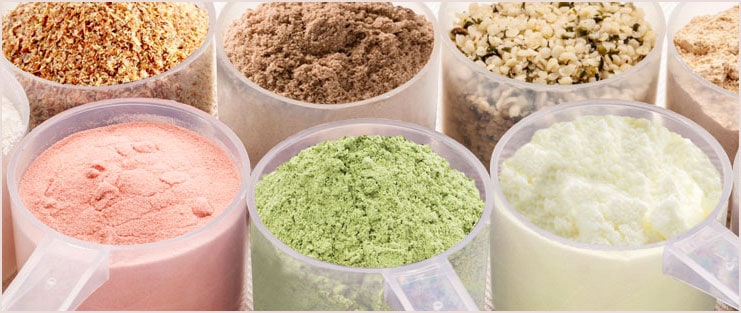Meal Replacement Diet
With New Year’s just around the corner, many people will, once again, be making resolutions to improve their diet and incorporate exercise plans into their lifestyle.
One popular idea is the "meal replacement" plan. This is where you substitute a high protein shake or food bar in place of one (or more) meal(s) per day.
While meal replacements can help to control caloric intake, do they really work? Let’s take a closer look at this type of eating plan.
 You simply substitute one or more meals a day with a low calorie, high protein substitute.
You simply substitute one or more meals a day with a low calorie, high protein substitute.
How Does Meal Replacement Diets Work?
The idea here is a very simple one. You simply substitute one or more meals a day with a low calorie, high protein substitute. Most people choose shakes as these are quick, easy to make, and are very portable, but there are other options, including protein bars and soup.
Most people have their meal replacement for breakfast and/or lunch, and then they eat a healthy, well balanced dinner. All replacement meals come with a low calorie diet plan which generally calls for 1,200 to 1,500 calories each day.
Are Meal Replacements Considered Nutritionally Complete?
Most powdered meal replacements are meant to be used with skim (1 percent milk fat) milk. These powders are high in protein and fiber to help you feel full. Using skim milk keeps the fat and calorie count low.
However, if you buy pre-made canned or bottled protein shakes, or nutrition bars, read the labels carefully! Many of them contain far too many calories, sugar, and unnecessary ingredients.
A typical meal replacement shake has about 200 calories per serving.
Reading labels is vitally important! Once you are familiar with a product, you can feel comfortable buying it over the course of your diet, but calorie and sugar content can vary even among different flavors from the same manufacturer, so be sure that you read every label!
Products with nutritional information similar to the following are best:
- Between 200 and 230 calories per serving
- Less than 5 grams of fat per serving
- Less than 3 grams of sugar per serving
- Between 10 and 15 grams of protein per serving
- Between 3 and 5 grams of fiber per serving
- Low sodium
- Fortified with at least 1/3 of your daily recommended levels of vitamins and minerals
 Many meal replacement shakes are too high in calorie and sugar content, even among different flavors from the same manufacturer, so be sure that you read every label!
Many meal replacement shakes are too high in calorie and sugar content, even among different flavors from the same manufacturer, so be sure that you read every label!
Do Meal Replacements Really Work?
Many super-models and other celebrities will tell you that it certainly does! Actresses such as Anne Hathaway, model Kate Upton, and actor Colin Ferrell drink shakes or other meal replacements to keep their weight in check.
Studies have found that when combined with a low calorie diet plan, meal replacements do indeed work. One study found that meal replacements were just as effective as a structured weight loss eating plan for losing weight.
So this is much more than just celebrity mumbo-jumbo! Science backs up the claims that meal replacements will cause you to lose weight.
The Advantages
Most people find meal replacements to be an easy way to control calories. There is no measuring, no weighing food, no calorie counting. All meal replacements clearly state how many calorie they contain.
Research has also shown that people who use meal replacements to lose weight gradually tend to keep the weight off. This is most likely because people will go back to meal replacements for a week or two when they find they have put on a few pounds.
Meal replacements are also super convenient. Some brands of shakes come in bottles or cans, so there isn’t even any mixing required!
The Disadvantages
Meal replacements can be fairly expensive. For those on a tight budget, the cost can be difficult to maintain for a long period of time.
For those who love variety and/or love to cook, this plan can get old quickly.
These types of plans also do not educate people about their eating habits or proper exercise routines. Meal replacements are a type of Do-It-Yourself plan, which means that most people will go back to their old eating habits once they have lost weight.
Sample Menu Plan
For this example, we will use a high protein shake as a meal replacement for both lunch and dinner.
- Breakfast: Black coffee or tea, 1 shake (190 calories)
- Snack: 1 cup of grapes
- Lunch: 1 shake (190 calories) and 1 salad using 2 cups of greens, tomatoes, cucumbers, and 1 tablespoon of low fat Italian dressing
- Snack: 1 apple or pear
- Dinner: 4 to 6 ounces of chicken breast or fish, 1 small baked potato with fat free sour cream, 1 cup of steamed vegetables and 1 cup of melon
- Snack: 2 cups of air popped popcorn flavored with calorie free spice such as garlic salt
The Bottom Line
While meal replacements can be a simple and healthy way to lose weight, they aren’t for everyone. You can actually make a cheaper, more nutritionally complete meal with real food such as soup and a sandwich or a salad with yogurt.
Meal replacements can’t be beat for convenience, to be sure, but there is actually nothing, whether it is a shake, a bar, or a supplement, that can equal a nutritious meal made from real food.